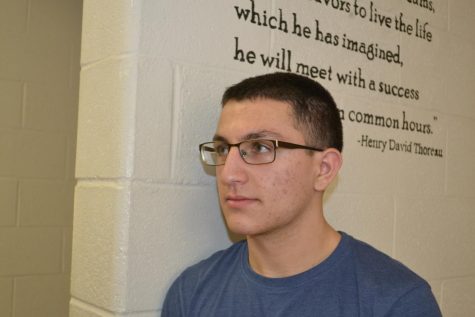
OPINION: Schools need to have rational conversations about weed
March 2, 2018
New Jersey Governor Phil Murphy, who was inaugurated on Jan. 16, has pledged to make the sale and consumption of marijuana legal as soon as possible. If approved, a bill introduced last May by Senator Nicholas Scutari would legalize recreational consumption of marijuana products statewide. Adults aged 21 and over would be able to possess up to one ounce of marijuana, 16 ounces of solid cannabis-infused products, 72 ounces of liquid marijuana tinctures, drinks and oils and seven grams of marijuana concentrate.
Murphy, who previously served as America’s Ambassador to Germany following a 23 year career at Goldman Sachs, has framed the push for legalization as an economic tonic—estimates from the Roseland law firm of Brach Eichler say New Jersey could raise upward of $1 billion in the first year of recreational weed sales—and though financial prospects have certainly broadened support of the initiative, Murphy and his adherents owe much of their plan’s popularity to meteoric shifts in American consensus about the drug.
Evolving Opinions
An October 2017 Gallup Poll showed that 64 percent of Americans say cannabis should be legal—a record high. Spurred by advancements in the medical marijuana industry, as well as massive success in a number of states who have already legalized weed for recreational purposes, Americans have adopted a new, considerably friendlier outlook toward marijuana.
The same poll showed that for the first time, a majority—51 percent—of Republicans support legalizing weed. Seventy-two percent of Democrats support legalization, as do 67 percent of independents.
While this revolution propels America into what many students the Wire spoke to call a new era of judicial equity and common sense, it puts schools in a particularly awkward position: How does the education system evolve in a time where science—and public opinion—have turned their backs on dated drug policies? How do schools adjust their curriculums when marijuana becomes legal?
“The disciplinary procedures would obviously stay the same, but I’d assume the education would have to change to reflect legality,” Principal Caesar Diliberto said. “I would entrust our own teachers to develop that curriculum.”
Student Assistance Counselor Anthony Emering, though a proponent of modernizing the educational approach to marijuana, said he has concerns about its perception among students. “Legality starts to send a message that diminishes the health effects,” he said. “Curiosity is part of the human condition, but there are a lot of practical and real risks we need to teach about.”
Mr. Diliberto echoed that same message, alluding to changes in marijuana’s potency and delivery. “It used to be said that you can’t overdose on marijuana,” he said. “That’s not the case now when you can get your hands on a bag of Gummi bears.”
It is worth noting that, despite the abundance of emerging methods to consume marijuana, it remains impossible to overdose on cannabis—in fact, a person would have to consume roughly 1,500 pounds of marijuana within about fifteen minutes to do so.
Agreeing on the facts
Factual distortion is at the core of what is nationally an ill-advised and misguided American approach to teaching about weed.
For years, schools have towed the federal line on marijuana; weed is considered a Schedule I drug alongside heroin and LSD—a classification that erroneously suggests it has no medical purpose and is extremely addictive. Schools have supported that War on Drugs approach to the supposedly face-melting psychosis of marijuana with little success—and understandably so.
Students said that efforts by adults to deter marijuana consumption often read more like comedy than reasoned dialogue; multiple students expressed concern that scare tactics actually diminish the validity of the authority figures that promote them.
Both Mr. Diliberto and Mr. Emering suggested, however, that such laxity about marijuana could have consequences.
“There is a real danger to minimize the risk,” Emering said, citing statistics about addiction.
Mr. Diliberto expressed similar concerns about marijuana’s increasing ubiquity.
“Teenagers are programmed physiologically to rebel,” Mr. Diliberto said. “The things that are available to teens are dangerous.”
Changing the conversation
Though there are risks associated with consuming marijuana, students said the education system needs to do a better job accurately communicating those drawbacks.
The honest distinction that marijuana is markedly safer than most drugs is an important one. Acknowledging that reality does not, as some suggest, promote marijuana consumption; rather, it encourages honest conversation about safely navigating encounters with weed.
The rift between reality and general adult positioning on marijuana is a crisis of legitimacy for educators. Students need to be able to trust that the information adults provide them is true; without that trust, the education system cedes its moral and factual authority.
There is plenty schools can do to initiate unbiased dialogue about weed. Having stigma-free conversations about frequency of use, types of products and consumer responsibility allows for informed decision-making and a rational analysis of weed’s downsides.
“Can you imagine a time when people will have their hookahs sitting on the coffee table?” Mr. Emering said.
Yes, actually—and schools have an obligation to try to imagine it too.

